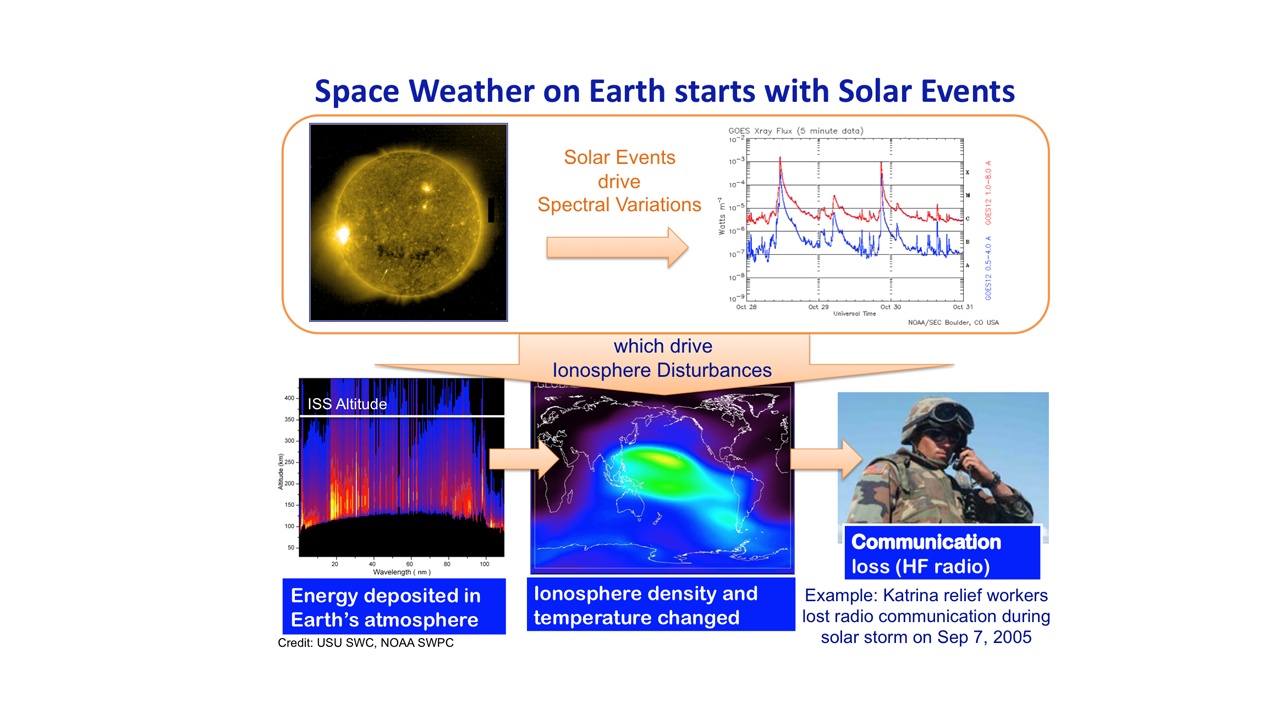
Caption: This slide provides an overview of space weather on Earth. A solar flare can increase the solar EUV radiation by a factor of two or more in just a matter of a minute. Just eight minutes after a solar flare event, Earth's atmosphere receives the full blast of the flare radiation. The EUV radiation is energetic enough to break apart molecules and atoms to create our ionosphere - being charged particles in our atmosphere at about 60 miles altitude. When our ionosphere is disturbed by a solar storm, we can have disruptions in our communication and GPS navigation systems. One example is the loss of radio communication for the Katrina relief workers during a solar storm a few days after Hurricane Katrina struck New Orleans.

Last modified: Wed Apr 21 10:37:35 MDT 2010